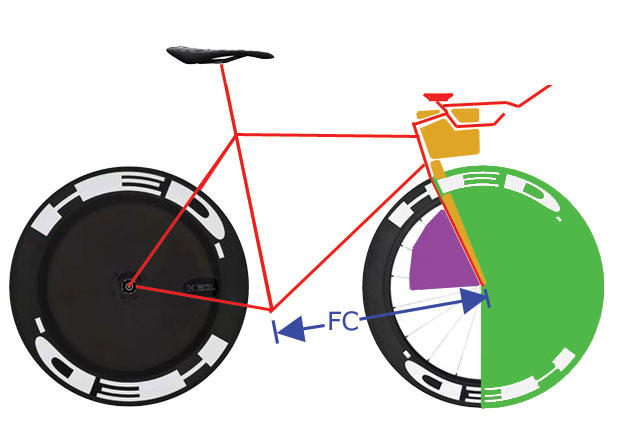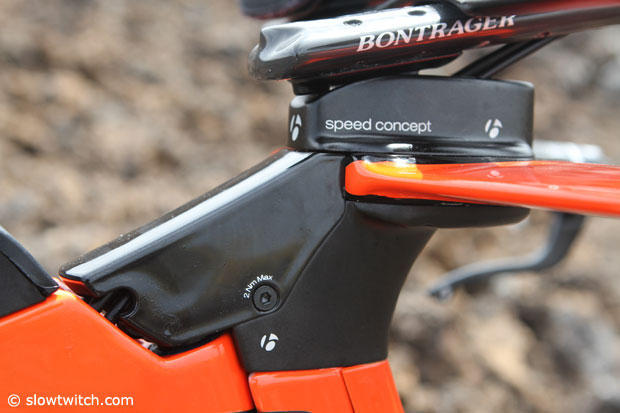Wheel Torque
Editor's Note: First published 16 years ago, this article by John Cobb on wheel (steering) torque is even more topical today, with the increased use of deep wheels since its first publication.
We’re going to obfuscate the wheel thing again.
For years we’ve been going to the wind tunnel and testing wheels, and we’ve generated a lot of results that help us, and you, decide what sort of wheel you ought to buy, strictly from an aerodynamic point of view. Then, of course, you add other data, such as weight, warranty, and price, and decide which wheel to buy.
We add a new wrinkle from time to time, as we did recently when we touched on the issue of what sort of tire goes well on the wheel you intend to ride. Now we’re adding another parameter altogether.
Over the years when we tested wheels at the wind tunnel at Texas A&M, we would occasionally speculate about how we could measure crosswind forces and how this would apply to steering torque. We finally got the new fixtures and computer programs working, and I think this will lead us to a more precise measurement of crosswind forces.
We mount the wheels in a fixture in the center of the floor in the tunnel. This fixture has a motor that spins the wheel at whatever speed we need for testing. As I gather data, we can rotate the wheels to simulate crosswinds. The term describing the angle of a wheel in the tunnel is "yaw," and we can measure yaws up to 180 degrees. We have now finally established a way to measure the "torque," or force the wheel experiences when air hits it from different angles.
The more surface area a wheel has, the faster it usually will be. We’ve been saying this for a long time and it’s still true, but that doesn’t mean it’s the best wheel for you. As you pedal down the road steering your bike in and out of winds hitting you from different angles, you experience a variety of sidewind forces. You also change the way sidewinds affect you as you change your velocity.
There are two "sets of behavior" we have observed wheels engaging in as they are subjected to crosswinds: the first is the tendency to self-align into the wind; the second is the wheel’s "attempt" to turn away from the wind. Imagine having a bird’s-eye view of a wheel in the tunnel. Look down on the top of the wheel as it rotates counter-clockwise. Some wheels will try to turn back to the right as the air hits them, and some wheels will try to continue turning to the left as the air blows on them. We found that some wheels could change from generating a "negative" force (wanting to turn back into the wind) to a "positive" force (wanting to rotate away from the wind) within a range of just 5 degrees of crosswind. Some wheels—and it did not seem to be tied to wheel surface area—could generate up to 10 foot-pounds of torque at the leading edge of the wheel.
Some of you may not know what a "foot-pound of torque" is, so here is a brief explanation. You take a rod that is 12 inches long and tie a one-pound weight on the very end of it. Then hold it straight out between your thumb and index finger like a fishing pole. You’ll notice it seems heavy.
Getting hit by a strong gust of wind might be analogous to having this weight at the end of the rod weighing one-tenth of a pound and suddenly having it become 10 pounds. But remembering that wheels can reverse their directional tendencies, imagine the weight on that pole changing from five pounds pulling down to five pounds pulling up. This is why some wheels are "twitchy" when the wind hits them.
I’ve only had a chance to test about 10 wheels, but as I do more testing we will gather more data to help figure out what can be done to make wheels not only faster, but more stable. So far it seems that—as with aerodynamic function—tire shapes and sizes can also affect wheel torque, as can spoke width and rim shape. What I can’t do—and I don’t think this can be done—is determine how a wheel is going to act by looking at it.
What we have been able to determine so far is that certain wheels, like Mavic Heliums, are among those subject to change in the pressure they exert (positive to negative). But wheels like this have so little mass that you really can’t feel the effects of such changes. Medium-deep-section front wheels, like some models made by Zipp, Hed and Corima, seem to generate a constant increase in positive pressure. Deep-dish rims and discs can generate a strong negative (self-centering) type of pressure. This isn’t necessarily bad, it just requires you to really pay attention to your riding. These wheels are also, by the way, always the fastest.
The problem with testing, other than the expense, is that it always seems to generate as many questions as it answers. We determined to more closely examine the issues described in this article, for example, a couple of years ago when we found that fork shapes can affect steering stability and that some wheels work better with certain styles of forks.
I don’t actually think steering torque will make you any faster or slower, but I do think it could add or subtract enough from your confidence on the bike to affect your times. If you worry about the wind blowing you around then you can’t fully concentrate on riding hard, and the clock doesn’t make any allowances for bike handling skills.




Start the discussion at slowtwitch.northend.network